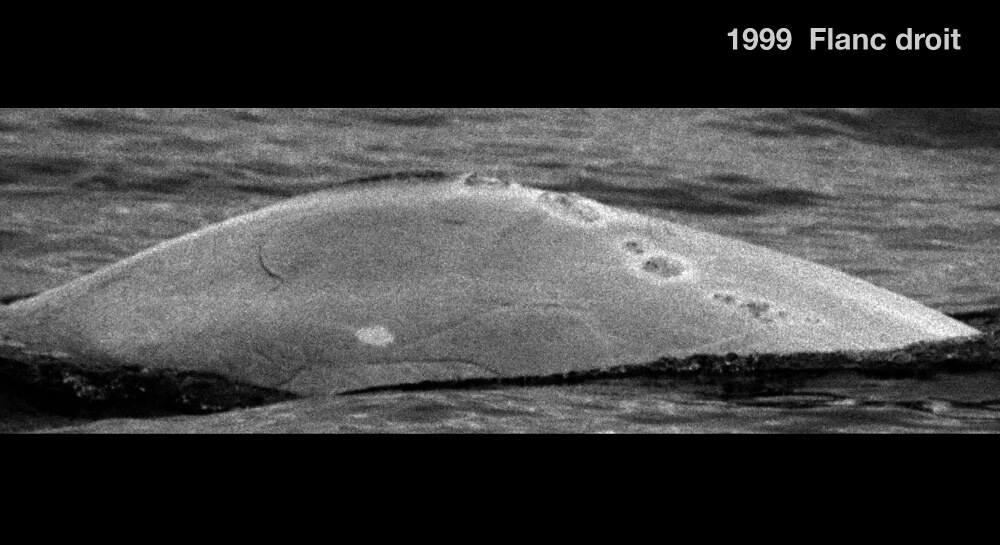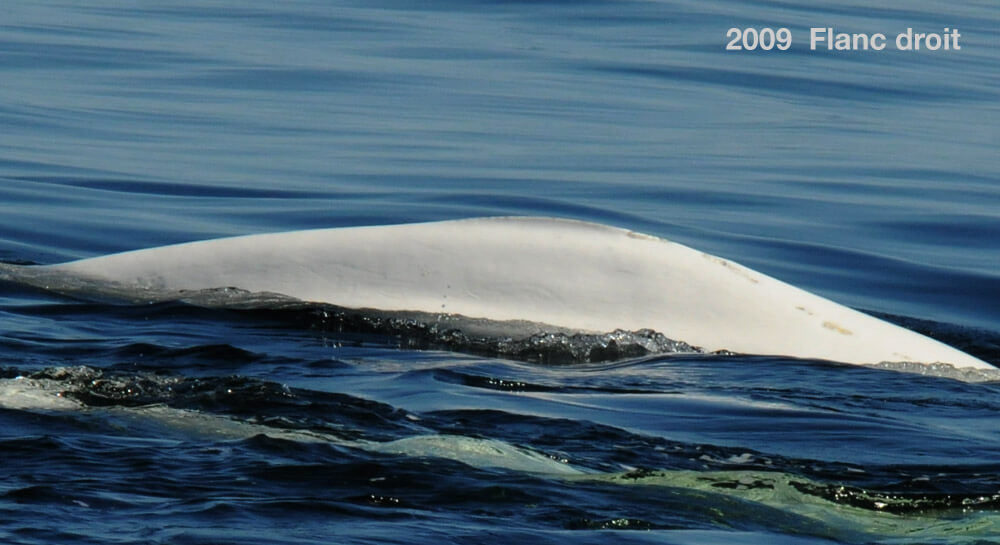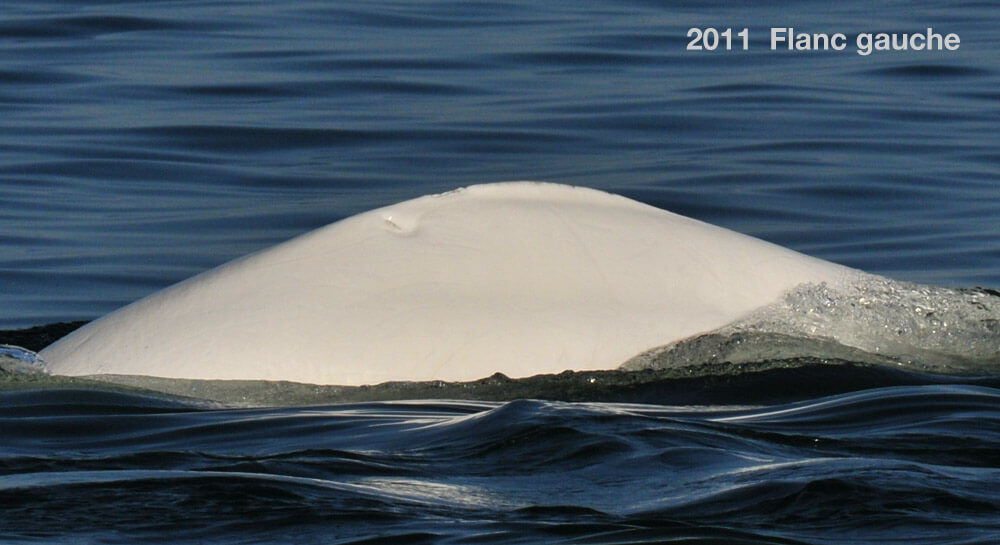Novo
Beluga


Adopted by W. Maxwell Agendas
-
ID number
DL0988
-
Sex
Unknown
-
Year of birth
Before 1990
-
Known Since
1994
Distinctive traits
Novo is easily recognizable thanks to the scar on its left flank, on the front part of its dorsal crest. This individual is even more distinct from the right side, with a series of scars visible in front of its crest.
Life history
We first encountered Novo in 1994, at which time it was gray. Beginning in 2004, it was always noted as “white”. Belugas fade in colour from gray to white between the ages of 12 and 16. Novo would therefore have been born before 1990.
Novo is easily recognizable thanks to a deep scar on the front part of its dorsal crest. Nevertheless, we lost track of this individual between 1994 and 1999 and from 2000 to 2004.
At the current time, data on its associations and the sectors it frequents are insufficient to determine its sex with certainty. In summer, adult belugas exhibit a high degree of sexual segregation. Bulls and cows demonstrate clear preferences, as much in their social associations as in the sectors they patronize. This behaviour is not quite as pronounced in juveniles and young adults. To date, Novo has been observed in all sectors of the species’ summer range and in several herd types. Over the next few years, its social affiliations and movement patterns should reveal more about its identity.
The stories of young belugas and the chance to monitor the evolution of their behaviour are our best tools for understanding the social lives of this species. By better understanding how belugas live, we will be able to better protect them.
Observations history in the Estuary
Years in which the animal was not observed Years in which the animal was observed
Latest news
Neither wind nor swell prevented our team from setting out today on the river in our research inflatable, the BpJam, in search of whales. In the early afternoon, we came across a large herd of belugas, made up of three distinct groups; one of them numbered at least 50 individuals! A few familiar backs catch our eye, including Novo and female DL0235, with her distinctive string of scars. The herd finally splits in two: some of the belugas head south-east, towards Ile Verte, while the rest seem to be heading south-west. Novo is one of them. The group, made up of white adults and gray juveniles, is particularly active. Pecking, porpoising, investigating our research boat… Amid a swarm of gannets, belugas repeatedly dive and surface. We suspect the presence of a particularly attractive shoal of fish in the depths. As the wind swells the waves, the animals gradually disperse. We finally leave Novo and DL0235, then in the company of a dozen other white belugas.
On board our inflatable research craft, the BpJAM, we head toward Les Escoumins to pursue our beluga photo-ID work. A light breeze blows from the southwest. We encounter our first herd, which comprises an estimated 45 to 55 belugas. They are very active and split into several smaller groups, making them difficult to tally. The animals are also taking long dives, further complicating our photography efforts. Nevertheless, one beluga catches our attention with its trail of scars near its dorsal crest: it’s Novo! Some of the belugas are vocalizing on the surface. New groups join the herd; we’re now observing over 75 individuals! Among the bulls present, we also recognize John A. Macdonald.
We take advantage of the fine weather to visit the downstream sector, where we regularly encounter herds of males. We cross paths with Novo off Île aux Basques. It’s in a herd of around sixty belugas, mostly adult males and a few gray individuals. The herd is divided into about ten groups of six to fifteen belugas. We also recognize the males JP, DL0269 and DL0370.
The animals are scattered and very active. Some belugas poke their heads out at the surface, as if to spy on us, while others spit water. They swim dynamically and directionally, then suddenly stop, dive and swim back to the same spot several times. They’re probably feeding. The encounter with Novo is also rich in sound. We hear all kinds of vocalizations, door squeaks, whistles and more. The beluga certainly deserves its nickname, the canary of the seas!
We’re off the coast of Trois-Pistoles. We make contact with a herd of some thirty individuals, including both adult and young belugas. Novo is identified! In fact, this is only individual that we managed to identify in the course of this contact.
After studying the herd for two hours, we leave. En route, we encounter a harbour seal, a few minke whales… and a horse carcass! Working at sea brings new adventures and surprising discoveries every day!
Sponsor
W. Maxwell Agendas adopted the beluga DL0988, alias Novo (2019). They created a series of agendas on the St. Lawrence river whales.
The team at W. Maxwell Agendas picked the name Novo:
«Novo as the beginning of a new relationship between humans and belugas.
For us, Novo is the ambassador, the one who helps to create this link between species that is essential to change our attitude towards nature.»
-Silvia Spampinato and Serge Turgeon, W. Maxwell Agendas





